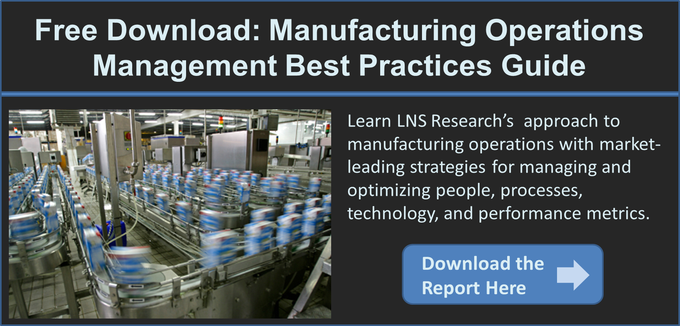 The manufacturing industries are getting increasingly excited about the future possibilities of sensors, equipment, machines, lines, processing units, plants, materials, containers, transportation, buildings, homes, computers, software, private and public clouds, mobile devices, people, departments, companies and processes – ALL being simply and inexpensively interconnected and collaborating together via Internet technologies to achieve innovative and amazing results!
The manufacturing industries are getting increasingly excited about the future possibilities of sensors, equipment, machines, lines, processing units, plants, materials, containers, transportation, buildings, homes, computers, software, private and public clouds, mobile devices, people, departments, companies and processes – ALL being simply and inexpensively interconnected and collaborating together via Internet technologies to achieve innovative and amazing results!
The phrase, “Internet of Everything," or "IoE” is even more appropriate for the scope of the broad vision and journey that is being expounded - beyond the Internet of Things (IoT).
What’s The Opportunity?
Small startups, mid-sized companies and major players like ABB, Accenture, AT&T, Bosch, Cisco, Ericsson, GE, Google, IBM, Intel, Microsoft, PTC, Rockwell Automation, SAP, and Siemens are all investing big and staking claim to manufacturing IoT as a key area of future growth. New alliances have been formed over the past year or so – including the Industrial IP Advantage (Cisco, Panduit, and Rockwell Automation) and the Industrial Internet Consortium (AT&T, Cisco, GE, IBM and Intel).
The German and U.S. governments both have IoT technologies as a key element of their respective Industry 4.0 and Smart Manufacturing Leadership Coalition initiatives and, combined, these governments are investing more than $1B to help accelerate commercial success in order to advance manufacturing.
Various vendors and industry/business analysts are predicting tens of billions of connected IoT devices and trillions of dollars of related business value to manufacturers over the next decade. LNS Research was recently invited to attend a manufacturing-specific track at Cisco Live – and Cisco sees manufacturing as the leading industry for future IoE value creation.
However, with all this investment and attention, why isn’t IoT adoption moving along faster in manufacturing? When looking for solid success stories about manufacturing enterprise IoT adoption, LNS Research still sees IoT in the early/first adopter phase. We also have some ideas about what could help accelerate things in the future.
What’s Slowing Things Down?
The fundamental Internet, Machine to Machine (M2M), computing and software technologies exist, so what’s slowing things down in relation to manufacturing application adoption?
We concur with the three key hurdles that are briefly stated in the recent GreenBiz blog article, which is a 101 primer on the IoT, and in the first post of this LNS Research blog series I’d like to expand on Hurdle #1 a bit further.
Lack of Interoperability Standards
When you look at the interoperability standards that have evolved over decades for making different vendors' sensors, actuators, controllers, supervisory systems, operations management software and business systems all work together, there are very few analogous standard communications protocols and information models that exist for the IoT world.
With today’s systems and applications, we are used to fieldbus standards with interoperable device information profiles, information standards for application to application use - like OPC/OPC UA, and higher level manufacturing information integration models like OAGIS, MIMOSA, ISA 88 and ISA 95. Even with these broadly deployed, there are vendor-specific solutions that fill the remaining integration and interoperability gaps.
In the IoT world, for M2M devices, there is IBM’s defacto MQTT (MQ Telemetry Transport) protocol, which is openly published for use in small computing footprint devices. The protocol communicates while requiring limited bandwidth, and in a fashion that is directly supported by IBM’s enterprise Websphere MQ (Messaging Queue) software.
Given the open MQTT specification, vendors who provide IoT application platform toolkits, like PTC/ThingWorx, Xively and others, do support this protocol. However, these IoT application platform toolkit providers, along with IBM and others know that having guaranteed message/information delivery to/from devices is only the start of what’s going to be required to make complete industrial applications work. That’s why one of the charters of the new Industrial Internet Consortium, of which IBM is a member, is to create more interoperability standards.
Device profiles for different classes of devices, along with interoperability with existing information integration standards and models will be required. And new ones will also be needed in order to better deal with the massive influx of new, unstructured ‘Big Data.’
The Industrial IP Advantage coalition is effectively addressing the secure use of standard Ethernet and Internet Protocols for industrial purposes, however in order to create a complete automation system solution, it pre-supposes the use of open EtherNetIP and CIP protocols, along with additional information profile and systems/network management features that are contained in hardware and software coming from the consortium member companies. Again, it represents a great start and a helpful industry initiative for the automation portion of the IoT/IoE, but in order to achieve the potential of tens of Billions of connected devices and Trillions of dollars in associated manufacturing business value, we believe that more enterprise-level participation in interoperability standards will be needed. Cisco is a common participant in both of the above alliances, so perhaps they will bring some of this thinking to help bridge the initiatives.
In the manufacturing industries, the use of Microsoft software platforms is quite prevalent and today’s automation and information standards for manufacturing interoperability already run on Microsoft platforms. We see Microsoft promoting its strengths in providing intelligent systems – ranging from Windows Embedded operating systems to highly-scalable Cloud computing and databases as key elements of their IoT offerings for manufacturing and other industries. It’s not clear to us that Microsoft is taking a leadership position in driving any new manufacturing IoT interoperability standards. However, as new manufacturing related IoT/IoE interoperability standards do emerge, we’re confident that Microsoft will ensure that these standards will either run on, or interoperate with their intelligent systems software platforms.
In the next blog articles, we’ll tackle the other hurdles to manufacturing IoT adoption and success. Our goal is to see these all of these challenges addressed as quickly as practically possible, so the manufacturing industries can continue to accelerate their success using these exciting new technlogies.
What Do You Think About Manufacturing IoT/IoE Interoperability Standards?
So what else is going on in the world of manufacturing IoT/IoE interoperability standards? Let us know what else of significance is going on in this regard as well as how you see the impacts of these unfolding in the future.
